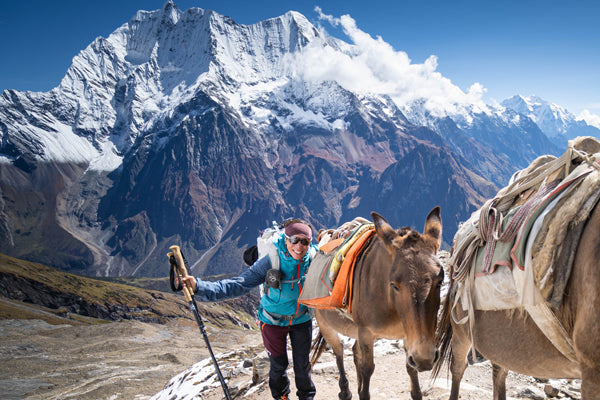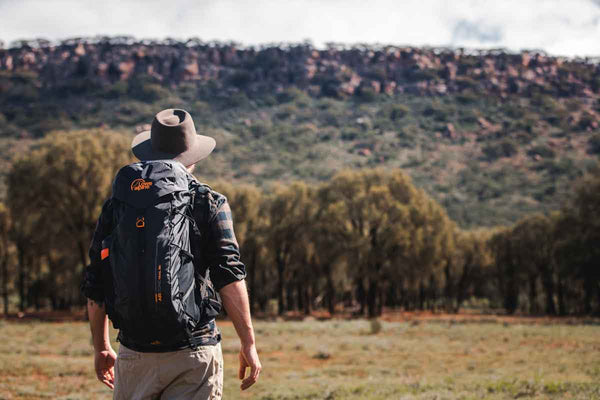
Adventure travel
Wandering around the planet is a truly incredible experience, and becomes even more so when you include some “outdoor adventures” in your itinerary. For many, this means participating in activities that you would normally pursue at home so you should pack most of the gear you normally use for travel and/or day walks. Additionally, there are a few products that are ideal for adventure travellers which we’d highly recommend taking along too.
Starting Off
For many, half the charm of adventure travel lies in the perceived differences between it and, say, a guided tour. Instead of regulated hours and rigid schedules, flexibility and spontaneity; instead of staid predictability, the tingly feeling of the unknown. Nevertheless, wherever you go and whatever you do, there are certain elements of your trip where good planning is not just prudent but necessary, and where a knowledge of some fundamentals will make the journey more enjoyable, not just for you, but for everyone you come in contact with!
Culture
Let’s face it, navigating the intricacies of a different culture can be challenging. However, it’s amazing how well you can get by in another culture by keeping a couple ground rules in mind. Friendliness can almost never go amiss and goes hand in hand with politeness. Do absolutely everything in your power to avoid becoming the stereotypical, obnoxious “touristy” tourist! Things go wrong on trips, that much is a guarantee; but how you handle it will make the ultimate difference between things becoming enjoyable once more verses you going home with nothing but horror stories. To that end, some home rules to bear in mind:
• Speak softly! Nobody knows why, but it is an accepted and well documented phenomena that everybody has a tendency to start raising their voice when they’re not understood. If they don’t speak your language, they don’t speak it—shouting out “I booked an ocean view! AN OCEAN VIEW!” is not going to get it for you. (At least, hopefully not, in our opinion!) The only clear message that comes across when you are shouting at someone is that you are obviously lacking in good manners.
• Speaking of language—make an effort to learn a bit! Even some basics like “please”, “thank you” and “do you speak english?” show the right attitude. Remember, this is not just your holiday destination, it’s someone else’s country. You’re the odd one out, not them! And speaking of language: whatever you do, don’t forget to correctly learn that invaluable phrase, “Where’s the bathroom?”!
• The aspects of our cultures which we take for granted are not always immediately apparent to the visitors here, and logically, the reverse is also true when you’re overseas. Do your best to familiarize yourself with what is acceptable before you go so that you don’t take—or give—offense. In some Asian cultures, for instance, it is perfectly acceptable, and in fact, common politeness, to make deep inquiries into the personal family life of a new acquaintance—marital status and even salary may be deeply delved into. Best be prepared and get into the mindset now!
• Whether it’s Public Displays of Affection or micro-mini-shorts, there’s a bundle of things which are better kept at home than paraded on the streets of exotic locales. (Really though, when it comes to PDA, might we suggest keeping that under wraps at home as well?) Either way, you’ll be doing yourself a huge favor by checking the cultural climate as well as the thermometer when it comes to planning your wardrobe or hot date.
• Buy a Lonely Planets guide book. They’re practically guaranteed to cover all you need to know (and a lot you don’t); from the best places to eat, what to wear, and where to buy a SIM card—all is contained in these invaluable tomes!
General Gear
• Sturdy, supportive walking shoes
• Daypack (18 - 35 litres)
• Sandals/runners for end of day relaxing
• Clothing appropriate to all weather changes
• Sarong or wrap
• Pegless clothes line
• Travel pillow or neck pillow
• Packing cells, dry bags or stuff sacks
• Money belt
• Water bottles
• Water purification system such as Steripen or Micropur
• Pocket walking guide (Lonely Planet)
• Sunscreen
• Insect repellent (if needed)
• Mosquito net (if needed)
• Earplugs
• Sewing kit
• Trek towel (compact, microfibre)
• Buff or hat
• Head torch
• Field first aid kit
• Swiss Army Knife or Leatherman
• Reading book
• Diary or journal
• pens/pencil
• sanitising hand gel
• Baby wipes
Additional gear (depending on planned activities)
• Backpack (55 - 85 litres)
• If camping—tent or shelter
• Sleeping bag
• Insulating sleeping mat
• Trekking poles
• Food (including snacks)
• Map
• GPS and/or compass
• Solar charger such as Goal Zero





